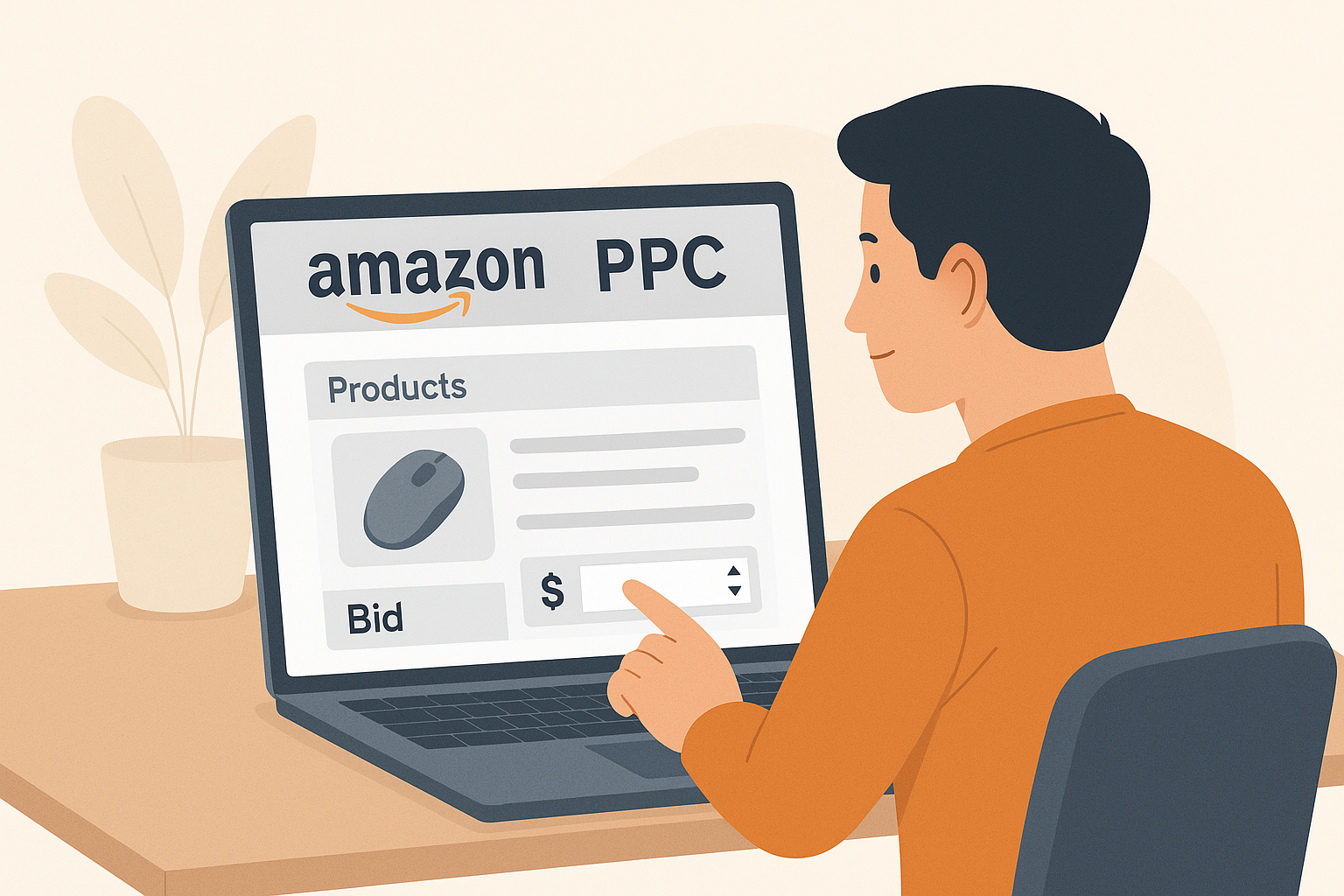- Perfality
- June 30, 2025
- 12:19 pm
- Read Time: 5 mintues
If you’ve listed a product on Amazon and expected sales to start rolling in… only to get crickets, welcome to the club. That’s where Amazon PPC makes a big difference.
Sellers often ask, “What is Amazon PPC?” or “How does it actually work?”—and it’s a fair question. There’s a lot of fluff out there, but at its core, Amazon PPC is simply a tool to help people find your products faster.
This guide will walk through the real Amazon PPC meaning, how the system works, and what to expect if you’re thinking about giving it a shot.
So, What Is Amazon Pay-Per-Click, Really?
Let’s break it down the way we explain it to new sellers we work with.
Amazon PPC stands for “Pay-Per-Click.” That means you pay Amazon a small fee only when someone clicks on your ad. No clicks? No charge.
The idea is to show up where shoppers are already looking. If someone searches “wireless mouse” and you’re running a campaign, your product could appear right at the top—with a small “Sponsored” label.
So, if you’re wondering what is Amazon pay per click, it’s basically your ticket to visibility in a crowded marketplace. And in 2025, it’s not optional—it’s a necessity if you want traffic without waiting months to rank organically.
Amazon PPC Meaning: More Than Just Clicks
It’s easy to think of PPC as just another line item in your expenses—but it’s more than that.
Understanding the Amazon PPC meaning gives you control. Instead of guessing what will work, you can test, track, and scale based on what shoppers actually respond to. That feedback loop—ads → clicks → data—is what helps you improve your listings, pricing, and keywords.
And yes, that means the Amazon PPC definition isn’t just a technical one. It’s about visibility, conversion, and learning what moves the needle in your category.
What Does Amazon PPC Look Like in Practice?
There are a few different ad types you’ll deal with:
- Sponsored Products: The most common format. These show up in search results and on product pages.
- Sponsored Brands: These highlight your brand, logo, and a set of products—great for awareness.
- Sponsored Display: This one lets you retarget people who viewed your product but didn’t buy.
Each of these works slightly differently, but they all fall under the same umbrella. When people ask us for the Amazon PPC definition, we always say: it’s an auction system where you pay to get seen—smartly.
How Amazon PPC Works: Behind the Scenes
Here’s the quick version:
- You pick your products and keywords
- You decide how much you’re willing to spend per click
- Amazon shows your ads based on relevance and bid
- You only pay if someone clicks
It sounds simple—and in some ways, it is. But there’s a lot of nuance in setting bids, picking the right match types, and knowing when to pause or scale a campaign. That’s why many sellers team up with an Amazon ad agency to help manage everything.
✍️ Final Thoughts: Is Amazon PPC Worth It?
If you’re still unsure about diving in, just know this—every top-performing seller on Amazon is using PPC in some form.
Whether you’re launching your first product or scaling a top ASIN, learning the amazon ppc meaning gives you an edge. You get faster feedback, better visibility, and more control over your sales performance.
But it’s not just about spending money—it’s about spending intentionally. The right strategy can make a small budget go a long way.
🚀 Need help running smarter PPC campaigns?
At Perfality, we’re not just another Amazon ad agency. We work hands-on with brands to set up, manage, and scale campaigns that grow sales and protect margins.






